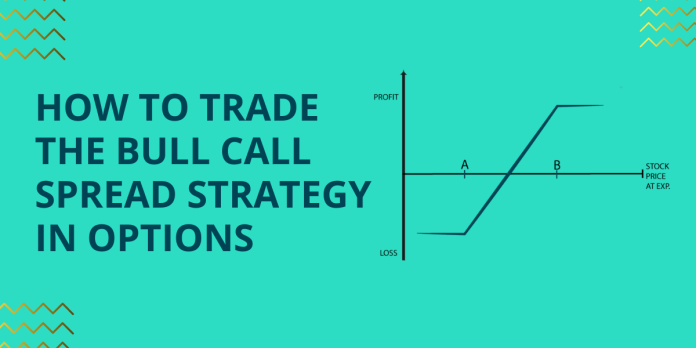Maximizing Your Bullish View
When you’re convinced that a stock or index is on the rise, the temptation might be to go all-in with a simple long call option. But before you do, consider the potential benefits of a bull call spread strategy. It could just be the optimal setup you’ve been looking for.
Bull Call Spread Strategy
In recent times, there’s been a noticeable surge in the number of folks diving into options trading. Many are lured in by the promise of quick riches, but there’s more to options than just overnight success stories. Options can actually serve as powerful tools for hedging and managing risks in your investment portfolio. However, navigating the world of options trading can be daunting, especially when it comes to figuring out the most effective strategies.
Understanding the Bull Call Spread Strategy
That’s where we come in. In this blog post, we’re going to break down one such strategy: the ‘Bull Call Spread’. This strategy is particularly handy if you’re feeling cautiously optimistic about an underlying potential to rise in the near future.
So, what exactly is a Bull Call Spread? Simply put, it’s an options trading tactic that involves buying one call option while simultaneously selling another call option at a higher strike price. This allows you to potentially profit from a moderate increase in the stock’s price, while also limiting your risk.
Example of Bull Call Spread:
Picture this: The Nifty is holding steady at 22,200, and you’re feeling bullish. Instead of diving straight into a single call option, you decide to set up a bull call spread. Here’s how it works:
You buy one lot of a call option with a lower strike price (let’s say 22,200), and simultaneously sell one lot of a call option with a higher strike price (say, 22,500).

Setting Up the Bull Call Spread
Setting up a Bull Call Spread isn’t rocket science. You start by purchasing a call option that’s either at the current market price or slightly above it. Then, you sell another call option with a higher strike price. The key here is to choose a strike price for the call option you’re selling that’s above a level where you think the stock might face resistance.
Also Read: Long Straddle Strategy
Choosing the Right Strike Price
But what if you anticipate the resistance level to be significantly higher than the current market price? This is where things get interesting.
Example: Applying the Three-Strike Rule
Choosing the optimal strike price for the call option you’re selling can be a bit tricky in such scenarios. Let’s break it down with an example. Say, for instance, the Nifty 50 Index is currently trading at 22,475. You identify the call option with a strike price of 22,500 as the one closest to the current market price i.e. ATM.
Strategizing with the Three-Strike Rule
Now, if you’re planning to buy this call option, it’s crucial to consider the liquidity of the option, especially if you intend to close your position before it expires. Typically, it’s advisable to close your position when the option is a couple of strikes away from the money. In our case, that could be when the Nifty Index is hovering around 22,700.
Implementing the Three-Strike Rule
With this in mind, you can then determine the strike price for the call option you’re selling. The aim here is to select a strike price that’s likely to be just above where the index will be when you plan to close your long call position. Following this logic, you might opt for a strike price of 22,800 to sell.
Mastering the Bull Call Spread Strategy
This approach aligns with what’s known as the ‘three-strike rule’. Essentially, it involves considering three key points: the current market price, the anticipated price when you close your long call position, and one notch above that for selling your second call option.
By adhering to this rule, you’re not only positioning yourself strategically within the options market but also optimizing your potential gains while mitigating risks. It may seem complex at first glance, but with practice and patience, mastering the Bull Call Spread strategy can significantly enhance your options trading prowess.


